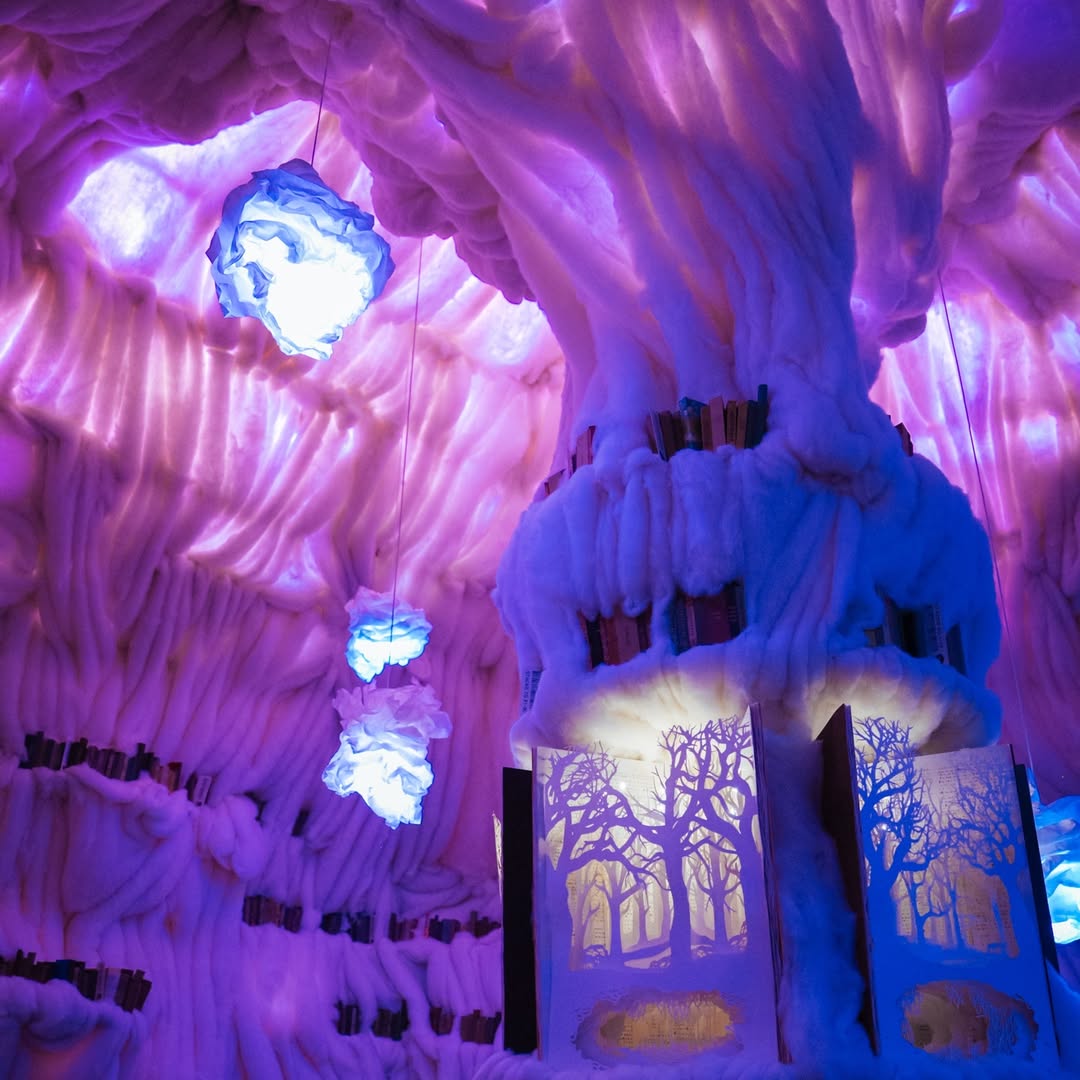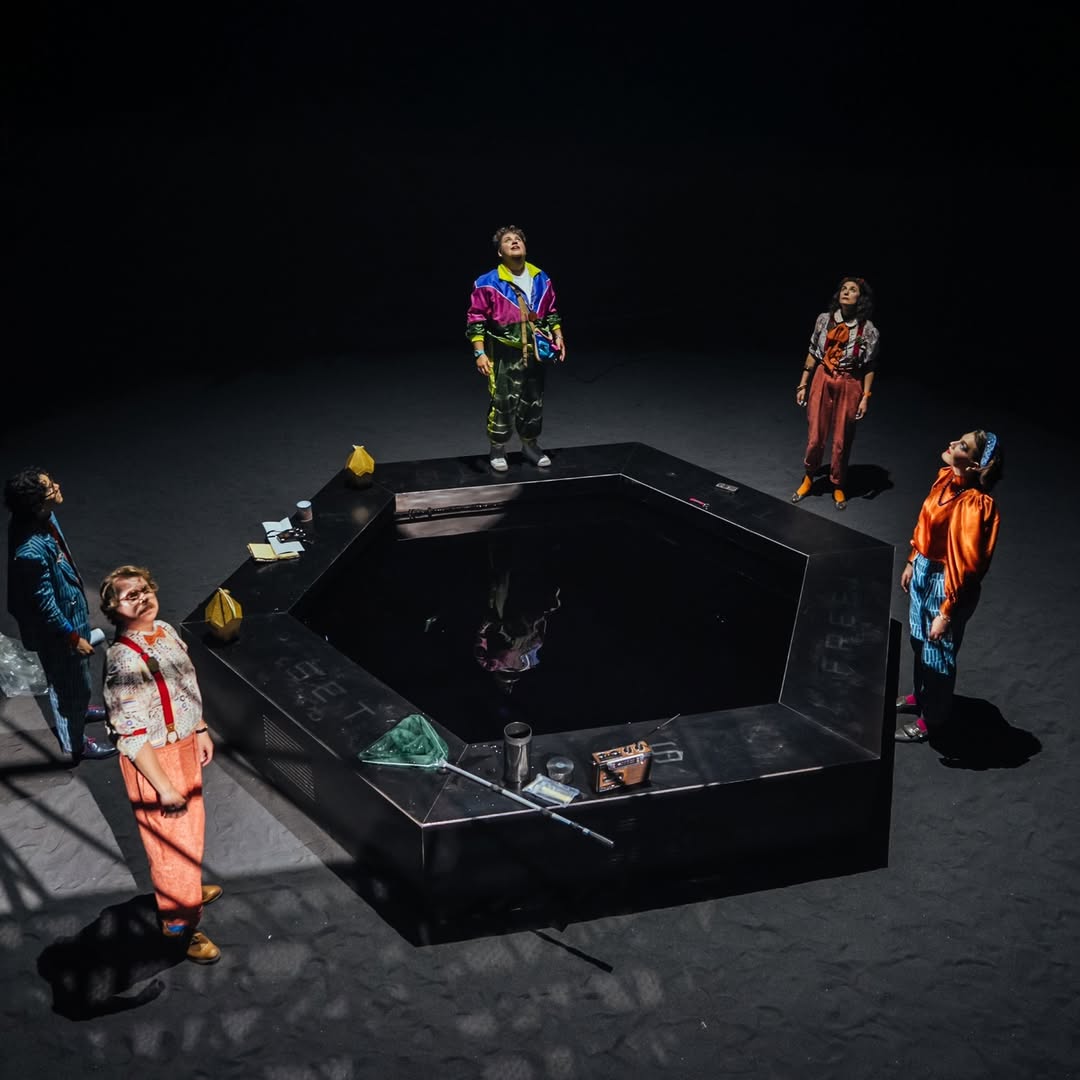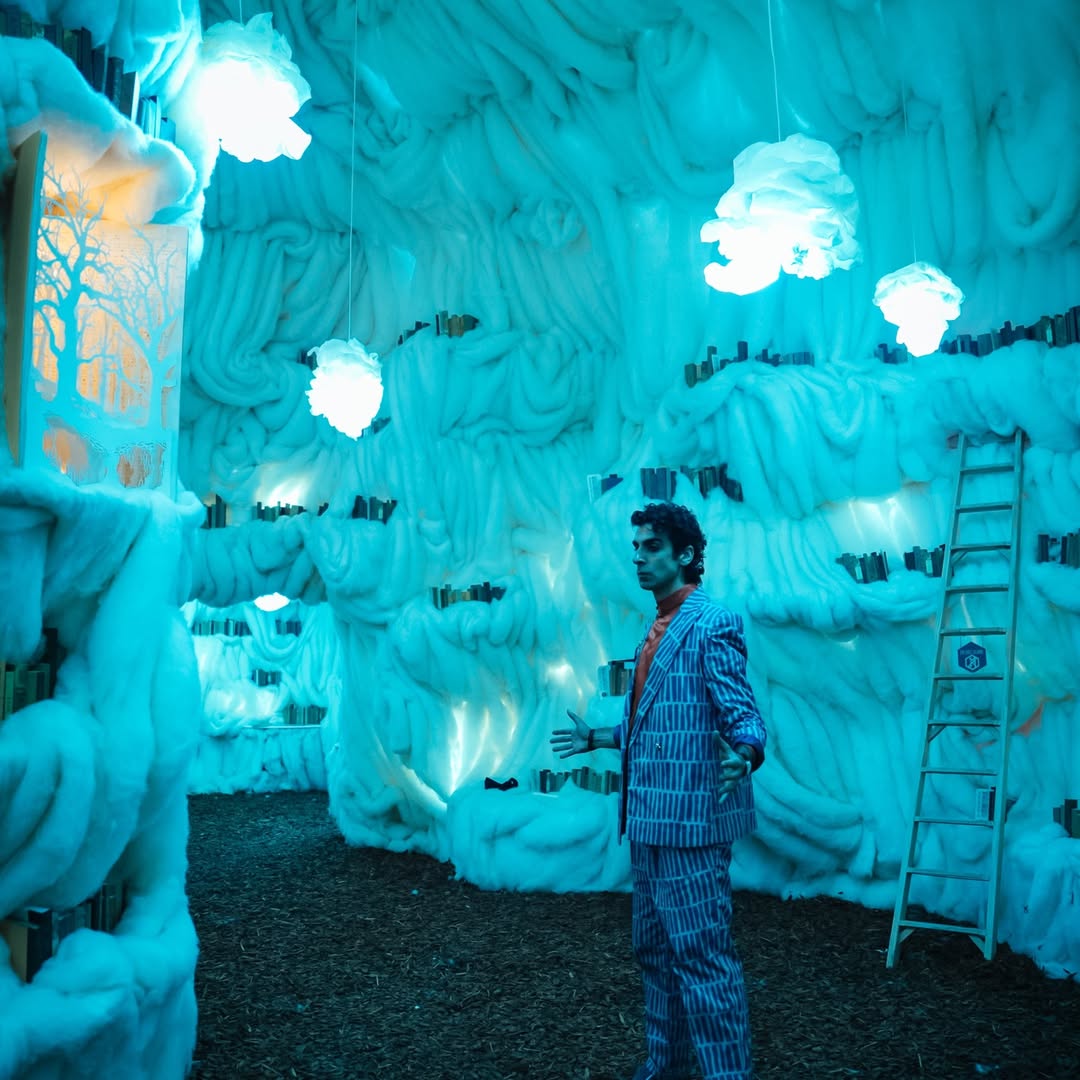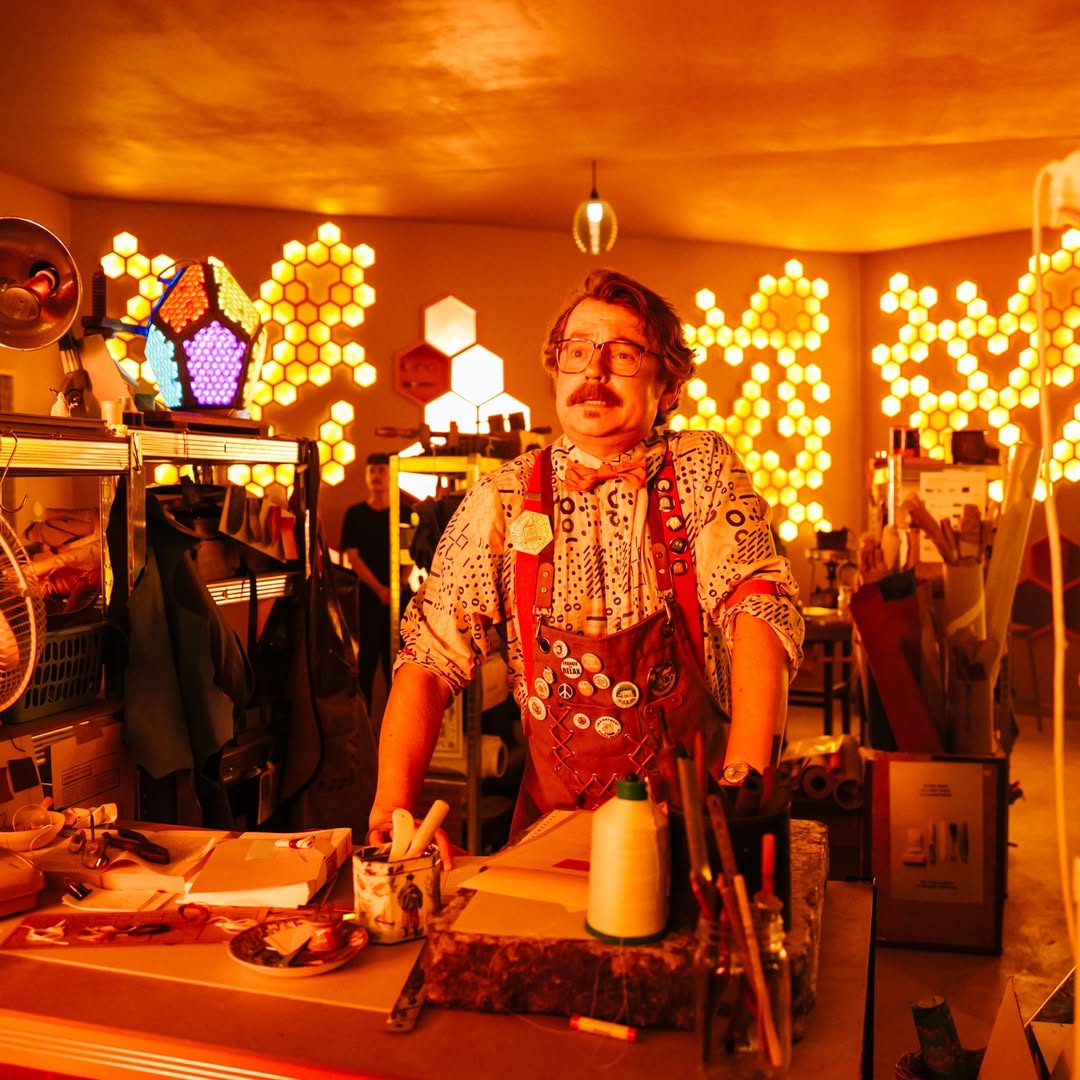Storehouse: Lost in the Noise of a Beautifully Broken Archive
Storehouse opens the door to a sprawling immersive landscape that blurs the lines between archive, ritual, and dystopia. Housed in a cavernous former warehouse in Deptford, the production transforms industrial remnants into a haunting metaphor for a failing information ecosystem. From the moment of entry, the experience demands presence—not just as an observer, but as a participant in a crumbling system tasked with protecting fragments of human knowledge. The concept alone feels monumental, evoking themes of memory, trust, and digital decay.
The set design stands as one of the most compelling aspects of the entire show. Floor to ceiling, every corner of the venue pulses with layered meaning. Moss-covered desks, flickering halogen lamps, endless filing cabinets, and glitchy projections build a physical memory palace that feels both sacred and decaying. The lighting carves shadows into walls like history carving into time, and the soundscape constantly shifts—whispers, alarms, echoes of forgotten recordings—enveloping the space with unease and nostalgia.

Navigating through the warehouse reveals a kaleidoscope of environments: ink-splattered rooms, rooms piled with shredded documents, eerily still tea rooms lined with outdated newsprint. The transitions between spaces feel like slipping between dimensions. Time becomes elastic—one moment submerged in ceremony, the next decoding fragments of a manifesto, or voting under dim lights in a ritual chamber. The weight of data and its deterioration is embedded in every step.
Interactive elements offer moments of tension and curiosity, but often lack meaningful consequence. Tasks, oaths, and symbolic duties gesture toward importance, yet often resolve into spectacle rather than impact. While the atmosphere invites participation, the experience rarely deepens into something that feels transformative or truly participatory. Agency remains partial, fleeting.

The characters populating this world, though portrayed with commitment, feel secondary to the architecture. Their presence occasionally drifts into abstraction—symbols more than individuals, voices more than souls. Moments of sincerity appear in pockets, yet without a cohesive emotional arc, connection becomes sporadic. The human story, despite its supposed urgency, often becomes buried beneath the production's thematic weight.
Narratively, Storehouse brims with potential yet struggles to find clarity. The premise—reconciling truth within an overwhelming flood of data—feels vital, especially in today's media climate. However, the delivery often collapses under its own ambition. Long-winded explanations, dense terminology, and fragmented storytelling dilute the urgency. Scenes drift without momentum, and resolutions feel more aesthetic than emotional. What begins as a compelling provocation eventually meanders through overstimulated spaces without landing a lasting message.

Visually, the finale dazzles. A fusion of groups, kinetic light, immersive sound, and ritualistic movement aims for transcendence. Yet despite the grandeur, the emotional payoff remains elusive. The questions posed throughout—around algorithmic influence, media reliability, and the fragility of collective memory—echo in the walls more than in the heart.
Storehouse ultimately succeeds as a visual and atmospheric marvel. The space demands exploration. The production team’s ambition, imagination, and technical execution deserve recognition. However, beneath the surface, the experience reveals a hollowness—rich in design, thin in narrative cohesion. The immersive shell houses important questions, but answers remain scattered like the digital ruins it seeks to preserve.

Storehouse leaves a lingering impression of spectacle and scale, but the core message fades before fully taking root. A triumph in aesthetics, yet a missed opportunity for resonance.

